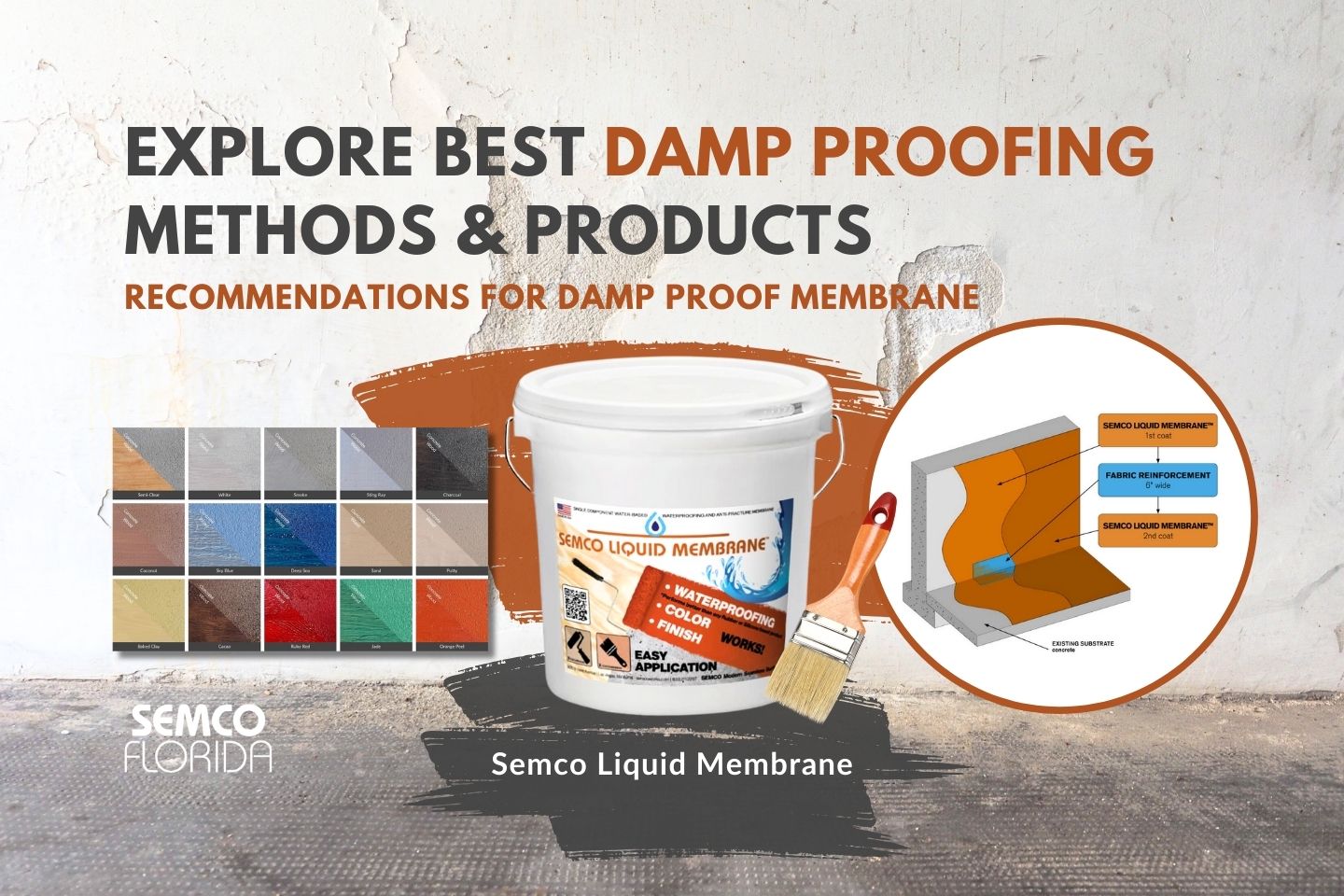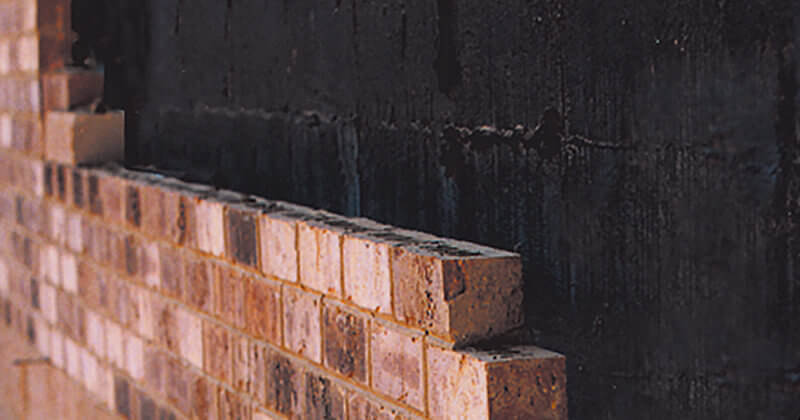Fixing condensation problems permanently with mould treatment newcastle
Fixing condensation problems permanently with mould treatment newcastle
Blog Article
Checking Out the Various Methods and Solutions for Effective Damp Proofing
Dampness in structures poses considerable challenges to both architectural integrity and indoor air quality. Different methods and options have emerged to battle this pervasive problem. From traditional damp-proof membrane layers to innovative chemical therapies, each method uses special benefits. Understanding these alternatives is crucial for reliable moisture control. Nevertheless, choosing the ideal remedy depends on details structure problems and needs, triggering more expedition right into the most effective damp proofing strategies available.
Recognizing the Root Causes Of Moisture
Wetness can arise from various resources, understanding these reasons is important for reliable remediation. Commonly, dampness stems from 3 key sources: rising moist, passing through moist, and condensation. Climbing damp happens when groundwater takes a trip up-wards via porous materials, such as block or rock, usually due to a lack of a reliable barrier (mould removal newcastle). Passing through moist is usually caused by outside variables, including roofing system leakages, faulty rain gutters, or damaged walls, enabling water to infiltrate a building. Condensation, on the other hand, results from excess wetness airborne, typically exacerbated by bad ventilation and temperature distinctions, resulting in water beads developing on surface areas. Recognizing these underlying issues is important, as each sort of moisture calls for a customized technique for remediation. Correct assessment aids in figuring out one of the most reliable options, eventually securing the architectural integrity of a structure and improving indoor air quality
Traditional Damp-Proof Membranes

Chemical Damp-Proofing Solutions
Chemical damp-proofing options provide a cutting-edge method to avoiding dampness breach in structures. These techniques typically involve the application of fluid chemicals that penetrate masonry and develop an obstacle against climbing damp. Generally used chemicals include silanes, siloxanes, and other water-repellent agents that respond with surface area products to create a hydrophobic layer.The application procedure generally requires drilling holes into the walls, infusing the chemical remedy, and allowing it to treat. This technique is specifically helpful for older frameworks where typical damp-proof membrane layers might be impractical. Furthermore, chemical damp-proofing can be less disruptive and extra cost-efficient than comprehensive improvement projects.While efficient, these options depend upon appropriate application and environmental conditions for peak performance. Regular maintenance and tracking are important to guarantee the durability of the damp-proofing treatment. Overall, chemical damp-proofing stands for a functional alternative for securing structures versus moisture-related damages
Dental Caries Wall Surface Building Methods
Dental caries wall surface construction techniques provide many advantages, especially in dampness control and power efficiency. By incorporating an air void in between 2 layers of stonework, these wall surfaces properly alleviate water ingress while enhancing insulation. This combination not only protects frameworks from wetness yet likewise adds to decreased power usage.
Advantages of Dental Caries Wall Surfaces
When taking into consideration efficient moist proofing techniques, the advantages of tooth cavity walls stand apart plainly. Dental caries wall surfaces contain 2 separate layers, producing an air void that effectively minimizes moisture infiltration. This layout minimizes the danger of moisture, as the outer wall serves as an obstacle versus rain and water ingress. Furthermore, tooth cavity wall surfaces boost thermal insulation, which adds to power efficiency by reducing warm loss. They additionally offer sound insulation, aiding to develop a quieter interior atmosphere. The air space permits for air flow, which helps in dampness control and decreases the chance of mold development. These advantages not just enhance the overall convenience of a structure yet likewise add to its longevity and architectural integrity.
Moisture Control Methods
Effective wetness control approaches are essential in dental caries wall building and construction to assure long-lasting defense versus dampness. One main approach involves the unification of weep openings, which help with water drainage from the dental caries, preventing build-up. Additionally, using breathable membranes can aid take care of moisture degrees while permitting caught vapor to get away. Correct positioning of insulation is likewise crucial, as it ought to not block drainage paths. Additionally, making certain that the outer fallen leaves of the tooth cavity wall are built with water-resistant products enhances total sturdiness. Normal upkeep checks are vital to recognize any clogs or damages early, securing the framework's stability. Inevitably, a mix of these methods creates a durable defense against dampness intrusion in tooth cavity walls.
Insulation and Energy Efficiency
Insulation plays an essential role in boosting energy performance check out this site within dental caries wall construction. By integrating protecting materials, these wall surfaces produce a thermal obstacle that minimizes warm loss and decreases power consumption. Effective insulation not just aids preserve a steady interior temperature level yet also reduces the threat of wetness, as it stops condensation within the wall surface dental caries. Various strategies, such as using inflexible foam boards or mineral wool, can be employed to accomplish perfect insulation performance. Furthermore, proper setup is see post necessary to assure that gaps and gaps are decreased, which can or else jeopardize power performance. Inevitably, a well-insulated dental caries wall adds significantly to general sustainability and decreases heating & cooling prices for homeowners.
Outside Damp Proofing Approaches
Exterior damp proofing approaches are vital for securing structures from moisture seepage. Two efficient strategies consist of the application of waterproof membranes and the setup of French drains pipes. These options help minimize water buildup and protect the honesty of buildings.
Waterproof Membrane Application
While various approaches exist for protecting against dampness ingress, the application of water resistant membranes remains a very reliable exterior moist proofing strategy. These membranes are typically made from products such as polyethylene, rubber, or modified asphalt, giving a durable barrier versus water infiltration. The setup procedure involves applying the membrane to the outside surface areas of walls or structures, guaranteeing total protection to stop leakages. Correct bond and securing at joints are important to making the most of performance. Water resistant membrane layers can be applied in various types, including fluid finishings and sheet membranes, enabling versatility based on the details needs of the framework. This method not only safeguards structures from wetness however likewise improves their longevity and architectural stability.
French Drainpipe Installment
One efficient method for taking care of groundwater and preventing wetness buildup around a building's structure is the installment of a French drainpipe. This drain system includes a trench loaded with crushed rock and a perforated pipeline that redirects surface area water far from the foundation. Proper installation requires careful preparation, making certain that the drain inclines far from the structure to facilitate ideal water circulation. Furthermore, the place of the drain is important; it must be positioned in areas prone to pooling or excess dampness. Regular upkeep, consisting of clearing up particles from the gravel and ensuring visite site the pipe continues to be unhampered, is essential for long-term performance. Ultimately, a well-installed French drain can significantly decrease the threat of water-related issues in structures and basements.
Interior Waterproofing Methods
Inside waterproofing techniques are crucial for securing a building's interior from dampness infiltration and prospective water damages. These strategies typically involve the application of specific materials and methods designed to produce a moisture obstacle within the structure. One usual strategy is the usage of water resistant coverings or sealers on walls and floors, which avoid wetness from penetrating surfaces.Additionally, setting up interior drain systems, such as sump pumps, can efficiently take care of water buildup in cellars and crawl rooms. Another approach involves making use of vapor barriers, which are installed to inhibit wetness activity from the ground into living spaces.Moreover, dealing with any type of cracks or gaps in wall surfaces or structures with suitable sealants assures a comprehensive defense versus water breach. By applying these interior waterproofing approaches, homeowner can substantially decrease the threat of mold and mildew growth, architectural damage, and other moisture-related problems. Proper implementation of these techniques is crucial for lasting protection and structure integrity.
Routine Maintenance and Inspection Practices
Normal upkeep and assessment techniques are crucial for guaranteeing the long-lasting effectiveness of wet proofing options in any kind of structure. Regular checks enable residential or commercial property owners to identify early indications of dampness invasion, such as peeling paint, mold growth, and moldy odors. These signs can signal underlying concerns that require instant attention.Inspections should be conducted a minimum of every year, concentrating on vulnerable areas like cellars, creep areas, and outside wall surfaces. Throughout these analyses, homeowner should examine sealers, drainage systems, and air flow to validate they function correctly.Additionally, keeping seamless gutters and downspouts is vital, as clogged up systems can bring about water buildup near the foundation. Carrying out a normal upkeep schedule, in addition to timely fixings, can considerably prolong the life-span of wet proofing actions and safeguard the structural integrity of the structure. Aggressive steps eventually contribute to the general health and safety of the living environment.
Regularly Asked Questions
The Length Of Time Does Damp Proofing Typically Last?
The duration of moist proofing performance differs, usually lasting between 20 to half a century. Elements such as application high quality, environmental conditions, and upkeep practices substantially affect the longevity of the wet proofing therapy.

Can I Damp Evidence My Home Myself?
The private pondered the feasibility of do it yourself damp proofing. With proper research and the appropriate materials, it is possible. They also identified the relevance of expert advice to ensure resilient efficiency and stop future concerns.
What Are the Indications of Ineffective Damp Proofing?
Indicators of inefficient damp proofing consist of persistent moldy odors, visible mold development, peeling paint, wet patches on wall surfaces, and wood decay - damp proofing newcastle. Home owners ought to deal with these problems quickly to protect against more damage and health and wellness worries
Does Damp Proofing Affect Indoor Air Quality?

How Much Does Specialist Damp Proofing Expense?
Professional moist proofing prices vary substantially, commonly varying from $1,000 to $5,000 relying on the home's dimension, the degree of the wet problem, and chosen techniques. Each scenario needs a tailored assessment for exact pricing. Commonly, dampness originates from 3 main resources: increasing damp, permeating moist, and condensation. When considering efficient damp proofing techniques, the benefits of cavity walls stand out plainly. Exterior moist proofing approaches are necessary for shielding structures from dampness seepage. While various approaches exist for avoiding moisture access, the application of water-proof membrane layers remains an extremely efficient external wet proofing technique. Indicators of ineffective wet proofing consist of relentless moldy smells, noticeable mold growth, peeling off paint, moist spots on wall surfaces, and wood degeneration.
Report this page